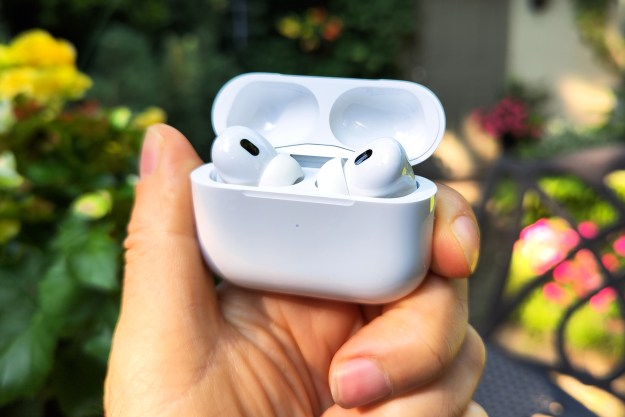A recent report by U.K. consumer watchdog Which? is yet another stark reminder that customer ratings on Amazon are not necessarily a reliable way of knowing if a product is good or not. The publication conducted a review of the e-commerce giant’s Bluetooth headphones category and discovered that nine of the 10 top products ranked based on customer ratings contained reviews of completely different products, thus artificially boosting the number of four-star and five-star reviews.
The practice is known as review merging. Among the products that were used to boost headphone ratings were umbrellas, personalized jigsaw puzzles, bowls, and jars. Bose was the only top-10 Bluetooth headphone brand that wasn’t found to be guilty of the practice.

This method for gaming Amazon’s reviews has been around for some time. Which? raised the issue in 2019, citing several other ways that Amazon sellers had been able to boost their listings, including the hijacking of Amazon customer accounts for the purpose of leaving fake reviews on their own products.
Review merging is a feature that Amazon created to allow merchants with many variations of the same product (e.g., headphones available in a variety of color options) to display a review from one variation on the pages of all variations, which makes sense. Unfortunately, the feature has been used to trick customers into buying products that would otherwise have poor ratings.
Which? shared its most recent findings with Amazon and a company spokesperson responded, saying that it proactively blocks the “majority” of abuse on the platform. “If we discover detail pages with incorrectly grouped reviews,” the spokesperson told Which? “we use these learnings to improve our prevention mechanisms. We have now taken appropriate enforcement action against the product listings and sellers in question.”
In the past, both the Federal Trade Commission (FTC) and Amazon has taken steps to go after these offenders. The FTC has levied fines, and Amazon has even booted some well-known (and well-reviewed) brands from its platform in retaliation for charges that they had used fake reviews. Amazon also pursued two companies it claimed were selling fake reviews on its site to sellers.
Digital Trends repeated the Which? experiment on some of the top 10 Bluetooth headphone listings in the U.S., and it didn’t take long to discover that similar shenanigans are taking place. On the product page for the No. 2-ranked Bluetooth headphones, the first three reviews appear to reference the correct product, but then things take a decidedly different slant for the remaining reviews, which include references to digital photo frames, USB fans, TVs, and HDMI cables. Some of these date back as far as 2011 (several years before the first true wireless earbuds were released), suggesting they were handpicked by the seller purely for their five-star value.
In fairness, after looking at the remaining top 10 products, it turned out this was the only product which was in clear violation of Amazon’s rules. But we also noticed something strange about the products that showed up when you sort by average customer review: Every product listed was from an unknown brand, and most had fewer than 200 ratings.
The first recognizable brand in the list is Bose, which showed up in 16th place, despite having 6,500 five-star ratings.
How to avoid being scammed by fake reviews
Sellers on Amazon will do everything they can to ensure that their products get consistently high reviews because they know that’s the key to driving sales. But how can you tell when these ratings are too good to be true?
Question the brand
In the past decade, we’ve seen an explosion of brands entering the headphones market as interest in wireless cans and earbuds has increased each year. And just because a brand is unfamiliar to you doesn’t necessarily mean it makes bad products. We’ve tried cheap wireless earbuds from brands like UGreen, Tronsmart, Earfun, Tribit, and Back Bay Audio — none of which can be considered household names — and they were all very good for the price. But the less familiar the brand, the more due diligence is required on your part.
Read all of the reviews
When reading Amazon customer reviews, be wary of ultra-short ones that simply say “Great product!” or “Exactly what I was looking for.” Generally speaking, these are meaningless and won’t help you make an informed choice. Instead, look for longer reviews that go into greater detail. Any discussion of things like battery life, build quality, or comfort are good indicators that person has actually used the product. Reviews that include photos are even more likely to be legitimate.
However, no matter how many legit-looking reviews a product might have, you should google the product brand and model followed by “review” to see if anyone has published their thoughts outside of Amazon’s platform. Professionally written reviews and roundups are your best resource. Digital Trends maintains comprehensive lists for the best wireless earbuds, best wireless headphones, and best noise-canceling wireless earbuds, and they’re an excellent place to start your research. But don’t neglect YouTube, as reviewers on that platform often cover the lesser-known brands that larger publications will neglect.
Be patient
If something seems too good to be true, keep shopping. While it’s not impossible to get a great product for a crazy-low price, in general, you get what you pay for. If price is the most important factor when choosing a set of headphones (or any tech product), don’t just grab the first five-star-rated product that hits your budget. Amazon and other retailers have handy filtering tools that let you narrow your search by price, and these can reveal all of the other products that match what you’re willing to spend.
Editors' Recommendations
- Let’s be honest, you probably can’t hear lossless audio
- Amazon is trying to prove that AirPlay and Chromecast don’t matter
- ESPN+: Live sports and more you can’t get anywhere else
- Amazon Fire TVs can stream directly to hearing implants
- Apple AirPlay 2 supports 24-bit lossless audio, but you can’t use it




